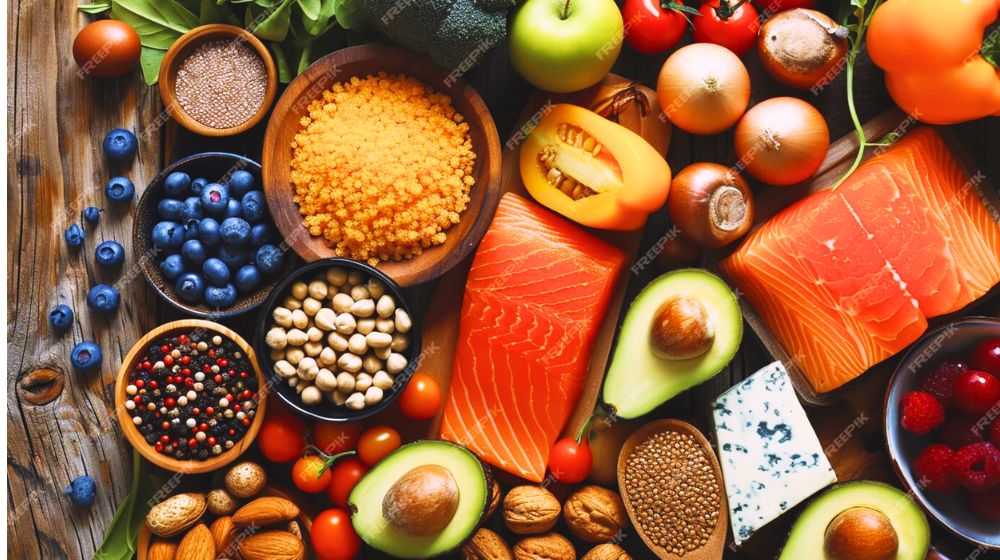Understanding Glp-1: Exploring Natural Alternatives
Glucagon-like peptide-1 (GLP-1) is a hormone responsible for managing blood sugar levels. However, in some cases, especially for those with diabetes, the body might require additional support to maintain healthy GLP-1 levels.
This is where natural alternatives to GLP-1 come in. These alternatives work alongside your body’s natural processes, helping to regulate blood sugar effectively.
As research in this area continues to evolve, let’s take a closer look at some natural GLP-1 agonists and how they may enhance your overall health journey.
Is There a Natural GLP-1?
The answer isn’t straightforward while certain foods can help you feel fuller for longer and slow down digestion (similar to how GLP-1 medications work), they may not lead to rapid weight loss in the same way. Let’s break it down further.
GLP-1 is a hormone that your body naturally produces, with cells in the gut or intestine secreting it to help regulate blood sugar levels. This hormone signals your body to produce insulin, which in turn instructs your cells to absorb sugar for energy. Additionally, GLP-1 slows down digestion, reduces hunger, and enhances metabolic health, all of which can support weight loss. It plays a key role in maintaining balanced blood sugar levels.
Typically, your body produces enough GLP-1 to manage blood sugar effectively. However, for those with diabetes or insulin resistance, this may not be sufficient. Diabetes occurs when blood glucose levels rise because the body cannot produce or properly use insulin. Insulin is essential for cells to absorb sugar and convert it into energy.
Insulin resistance happens when cells do not respond properly to insulin. Without insulin’s guidance, cells can’t absorb sugar, resulting in elevated blood sugar levels.
This is where GLP-1 receptor agonists come into play. These medications mimic the natural GLP-1 hormone, boosting the body’s GLP-1 levels to better control blood sugar. They help stimulate insulin release and improve insulin sensitivity, allowing cells to absorb glucose and lower blood sugar levels. Additionally, they help prolong feelings of fullness and curb appetite.
Several GLP-1 agonist medications are available, including:
- Exenatide (Byetta, Bydureon)
- Liraglutide (Victoza, Saxenda)
- Dulaglutide (Trulicity)
- Semaglutide (Wegovy), which is also used as a weight loss medication.
However, if GLP-1 medications aren’t suitable for you, there are certain foods you can add to your diet that act as natural GLP-1 agonists and assist with blood sugar management.
Stephanie Nelson, a Registered Dietitian, explains, “While changing your diet won’t produce the same effects as GLP-1 medications, it can help you feel fuller for longer and slow down digestion. We’re still learning a lot in this area, so there’s more knowledge to come as time goes on!”
Though the results of ongoing research on natural GLP-1 agonists are still emerging, even small changes in diet and lifestyle can have a positive impact on your long-term health.
With that in mind, let’s explore some natural ingredients that can help boost your GLP-1 levels.
Top 5 Foods and Supplements That May Naturally Boost GLP-1 Levels
Here are some natural GLP-1 agonists that can give your body additional support for better blood sugar control:
-
Eggs and Protein-Rich Breakfasts
Recent studies suggest that consuming protein and calcium-rich foods at breakfast may boost GLP-1 release and assist with weight loss. While the connection between protein-rich foods and GLP-1 release is still under investigation, and current evidence is limited, incorporating protein into your morning meal offers numerous health benefits.
Starting your day with protein-packed options such as eggs, milk, peanut butter toast, protein smoothies, quinoa porridge, or Greek yogurt with fruit not only provides essential nutrients but also supports a healthy lifestyle. These foods can help regulate blood sugar levels and keep you feeling fuller for longer, even if their direct effect on GLP-1 release is still being studied.
-
Nuts as nutrient-dense snacks
Nuts are tasty, nutrient-dense snacks that can contribute to a balanced diet. There’s been some debate about whether nuts influence GLP-1 levels, a hormone involved in regulating appetite and insulin. Research on this topic is mixed; some studies suggest that nuts may elevate GLP-1 levels, while others indicate a reduction in GLP-1 after nut consumption. More comprehensive research involving diverse populations is needed to clarify this effect.
However, nuts are undeniably beneficial due to their rich content of protein, healthy fats, and dietary fiber. Incorporating nuts into your diet can improve overall nutritional quality, which is linked to better weight management and health outcomes. So even if the impact on GLP-1 remains uncertain, adding nuts to your diet is likely to enhance your nutrition.
-
Fiber-rich grains to promote GLP-1 production
Incorporate high-fiber grains into your daily diet to encourage the natural production of GLP-1. Grains abundant in soluble fiber, such as oats, barley, and rye, can aid in GLP-1 secretion. Additionally, they may help regulate blood sugar levels, enhance insulin sensitivity, and support digestive health.
Replacing refined grains with these high-fiber whole grains can also be beneficial for weight management and overall well-being.
Many people believe they are meeting their fiber needs, but often they fall short. Adults are generally advised to consume 25 grams of fiber daily for women and 38 grams for men.
-
Magnesium supplements to help regulate blood sugar levels
Magnesium is a vital mineral with numerous health benefits, including supporting healthy blood sugar levels. Studies conducted on diabetic rats suggest that magnesium supplements may enhance GLP-1 release, aid in glucose metabolism, and improve insulin sensitivity.
Despite this, magnesium is an important nutrient with advantages beyond its potential impact on GLP-1. You can increase your magnesium intake by consuming foods like spinach, leafy greens, nuts, peas, beans, whole grains, and seeds, or by taking magnesium supplements.
-
Lean protein to boost GLP-1 levels and preserve muscle mass
Incorporating lean proteins such as chicken, fish, and tofu into your diet could help increase GLP-1 levels. These protein-rich foods provide essential amino acids that may promote GLP-1 release, support muscle maintenance, and aid in weight management.
Including lean proteins in your meals may boost your natural GLP-1 production, stabilize blood sugar levels, and keep your muscles in good condition.
In Summary
By adding eggs, nuts, high-fiber grains, magnesium supplements, and lean proteins to your diet, you can enhance your overall health. These nutrient-dense foods contribute to a well-rounded diet and may offer benefits for GLP-1 production and maintaining a healthy weight.



